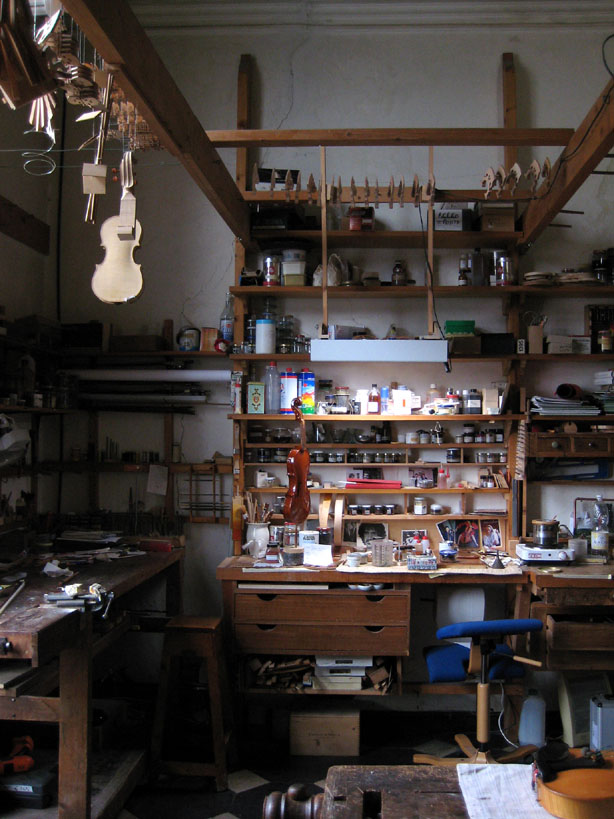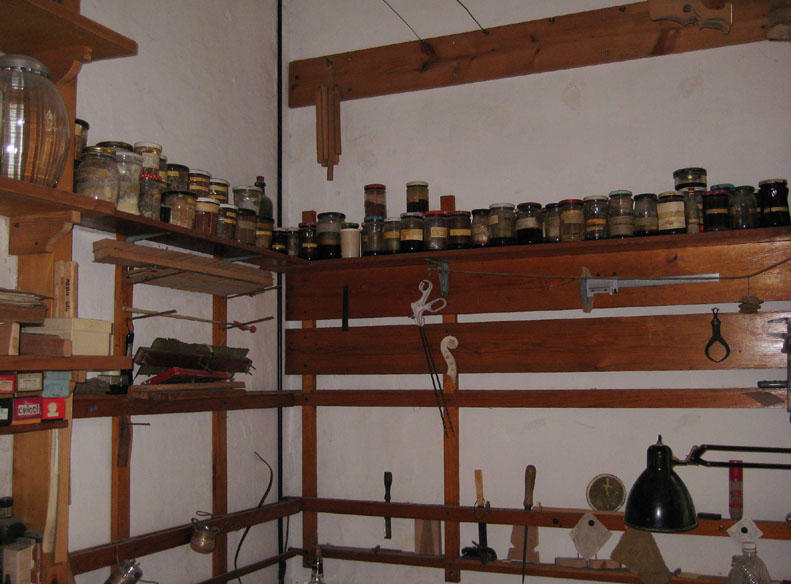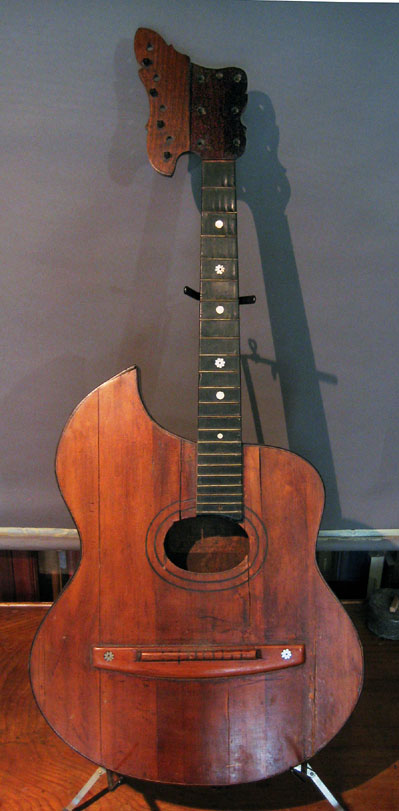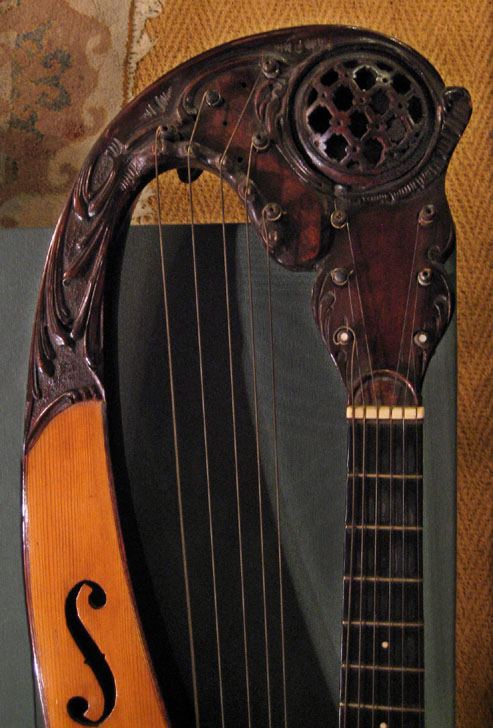Our story left off in the evening of Day 2, exhausted in our hotel room.

We woke bright and groggy in order to meet Franco and Sylvia for a full day of visits to the city’s top luthiers, whom we hoped might have a harp guitar or two that was new to me.

The first stop was a short walk (though don’t ask me to retrace my steps) to this atmospheric courtyard, home of respected Genoese violin builder and restorer, Pio Montanari.

The atmosphere of the shop was right out of the turn-of-the-last-century images in the Mozzani book

The shop is part of an old sub-divided palazzo, with much of the painting remaining on the high vaulted ceiling

A bass violin rests in the rafters

Ancient workbenches and authentic tools, including old hide glue pot. The diaper appeared to be the only modern convenience, used for…?

Pio shows me one of his violins. I feign “studious expertise” but am sadly clueless about “fiddles”

Pio had one beautiful harp guitar – a 1930 Giuseppe Lecchi, who was one of three students of the great luthier Cesare Candi.

The wonderful headstock and bass extension are pure Candi.

Note the nice scalloped, shaped fingerboard termination at the soundhole.

Beautiful tiger maple neck with sides and back of nice flame maple with red-pigment varnish.

Pio of course has every possible authentic varnish for restoration and fine violins

I spotted another harp guitar in the loft, so asked Pio to bring it down.

If it looks basically identical to a Gazzo but is not a Gazzo, it must be his devoted follower, Poggi. The bass extensions interest me keenly: Clearly, Lecchi copied his master, Candi, while Poggi copied Gazzo, yet both are so similar. Meaning, either Candi or Gazzo came up with this theorboed extension design (and variants thereof) and one copied the other – though we’ve yet to figure out who! Apparently, no biographical information or addresses are known regarding Poggi, though there are many harp guitars now known

We reluctantly left the shop of the warm and accommodating Pio, and took another walk through a maze of Genoese streets and alleys. The next stop was Giordano Violins, the shop of which was very modern and almost the opposite of Pio’s.

Alberto Giordano builds, restores, researches, writes, and publishes. He is also a consummate gentleman. Here he shows us some Milanese mandolins

Lost my dang notes…I believe these are by Raffaele Vinaccia, the son of the guitar maker, from the late 1890s.

His prize was a birthday gift from his wife. Look familiar? Yes – it is the same maker of those two strange, unlabeled instruments that Franco obtained recently (see Day 2).

Luckily, this one has a legible pencil inscription and date: Nicolo Priano, 1926. Note the same 3 high scalloped frets. Nothing is known of Priano, who is new to historians.

This is Priano’s most amazing headstock yet, with something like a potpourri container in the head.

Even the back of this one features some ornate carving.

Similar wood appliqués on the top, large soundhole, and not-quite-so-massive bridge

This beautiful instrument is an original Cesare Candi from 1908.

 Though the extension is simpler, the main headstock shape is divine.
Though the extension is simpler, the main headstock shape is divine.

This interesting instrument with a very distinctive bass extension is by another new maker for the harp guitar encyclopedia: Giuseppe Rocca of Turin
Interesting in that it is from 1853, showing a “harp guitar bridge” between the 1830’s Guadanini Viennese-influenced instruments, and the resurgence with Candi in the 1890s.

I thoroughly enjoyed meeting Alberto, and not just because he spoke perfect English. He is something of a fellow collector and is also interested in and knowledgeable about American guitars. He even had a green Gretsch hollow-body hanging on the wall! This stems from his youth when he played in a bluegrass band with…who else? Beppe Gambetta!
Next week: A visit with the holy grail itself: Taraffo’s harp guitar!





